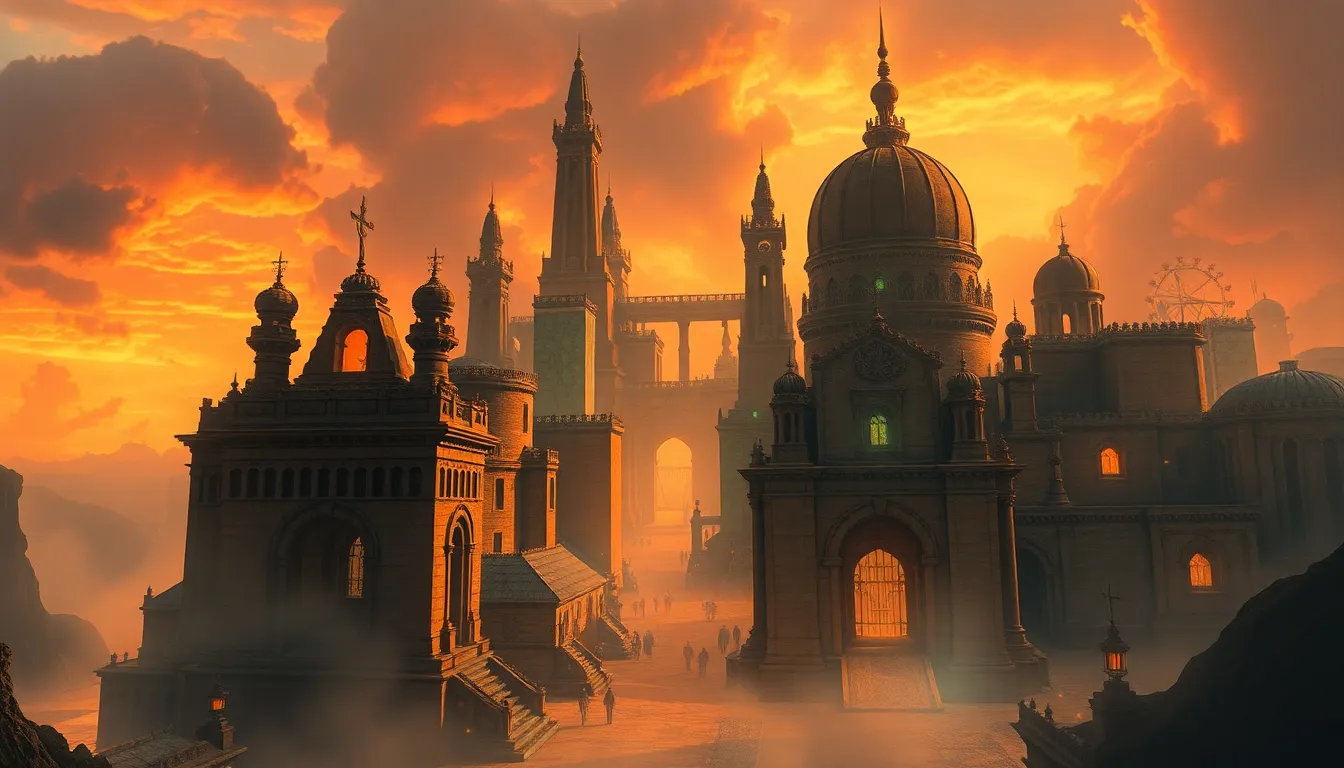Sacred Cities: Urban Legends and the Mythical Places They Hide
Introduction to Sacred Cities
Sacred cities hold a significant place in the hearts and minds of cultures worldwide. These cities are often seen as manifestations of spirituality, history, and community. They serve as focal points for religious practices and are repositories of collective memory, tradition, and beliefs. A sacred city is not merely defined by its geographical location but by the stories, rituals, and experiences that transcend the physical realm.
The intersection between urban legends and mythology in these sacred cities creates a rich tapestry of narratives that inform our understanding of their significance. Urban legends often arise from the collective consciousness of a population, reflecting their fears, aspirations, and cultural values.
The Historical Context of Sacred Cities
Throughout history, many cities have been designated as sacred due to their association with divine events, religious figures, or spiritual practices. Ancient sacred cities like Jericho and Mecca laid the groundwork for urban centers that served not only as places of worship but also as hubs of trade, culture, and governance.
The development of these urban centers was intricately tied to the evolution of religion and spirituality. As populations grew, so did the complexity of their belief systems, often leading to the construction of temples, monuments, and other structures that reflected their sacred significance.
Urban Legends: A Brief Overview
Urban legends are contemporary folklore, often characterized by their sensational tales that spread through word of mouth, social media, or other forms of storytelling. They typically involve mysterious or frightening elements and serve as cautionary tales or moral lessons.
Several psychological and cultural factors contribute to the creation and perpetuation of urban legends, including:
- Fear of the Unknown: Many urban legends tap into our fears and anxieties about the unseen.
- Social Identity: They often reflect the values and beliefs of a community.
- Communication: The spread of these legends is facilitated by modern communication channels, making them more accessible.
Case Study: Jerusalem – The City of Myths
Jerusalem stands as a significant sacred city for Judaism, Christianity, and Islam. It is a place of pilgrimage, reverence, and historical importance. The city is intertwined with countless narratives that shape its identity, including the tales of the Golem—a creature from Jewish folklore—and the Ark of the Covenant, said to house the tablets of the Ten Commandments.
Urban legends surrounding Jerusalem often reflect its tumultuous history. The Golem, for instance, is said to have been created by Rabbi Judah Loew to protect the Jewish community from persecution. This legend, among others, adds layers of mystique to the city, highlighting the intertwining of faith, history, and myth.
Exploring Varanasi: The City of Life and Death
Varanasi, one of the oldest continuously inhabited cities in the world, holds immense significance in Hindu spirituality. It is believed that dying in Varanasi allows one to attain moksha, or liberation from the cycle of birth and rebirth. The Ganges River, flowing through the city, is considered sacred and is central to many rituals.
Urban legends surrounding Varanasi often involve the ghosts of the dead and the spirits said to linger in the streets or near the river. Stories of the Naga Baba, a mystical figure who roams the ghats, and tales of miraculous occurrences add to the city’s legendary status.
The Enigmatic Lore of Machu Picchu
Machu Picchu, an iconic Incan sacred site, is shrouded in mystery and intrigue. It was built in the 15th century and is often referred to as the “Lost City of the Incas.” The breathtaking architecture and stunning location in the Andes Mountains contribute to its sacred allure.
Urban legends about Machu Picchu include tales of lost treasures hidden in the ruins and mythical creatures said to inhabit the surrounding mountains. Stories of the Pacha Mama, or Earth Mother, reflect the reverence for nature and the spiritual beliefs of the Andean people.
The Haunted Streets of New Orleans
New Orleans is a city steeped in spirituality, voodoo practices, and a rich history of cultural blending. It is renowned for its vibrant music scene, unique cuisine, and, notably, its haunted locations. The city’s historical context, marked by its colonial past and African heritage, contributes to its mystical reputation.
Urban legends in New Orleans often revolve around haunted sites such as the LaLaurie Mansion and the St. Louis Cemetery No. 1. Tales of ghosts, spirits, and voodoo rituals echo through the streets, offering a glimpse into the city’s complex relationship with life, death, and the afterlife.
Tokyo: The Intersection of Modernity and Myth
Tokyo, as a modern metropolis, is also deeply rooted in Shinto and Buddhist traditions. The city’s sacred spaces, such as the Meiji Shrine and Senso-ji Temple, coexist with its bustling urban life, offering a unique blend of the old and the new.
Urban legends in Tokyo, such as the tale of Kuchisake-onna, a spirit of a woman with a disfigured mouth who asks her victims if they find her beautiful, reflect the anxieties of urban life. These legends, often shared among younger generations, highlight the continuing relevance of myth in the face of modernity.
The Impact of Technology on Sacred Cities and Urban Legends
In the digital age, technology plays a crucial role in reshaping urban legends in sacred cities. Social media platforms and online forums have become breeding grounds for the exchange of stories, allowing urban legends to spread rapidly and evolve.
Digital storytelling can alter traditional narratives, as people share personal experiences and reinterpret myths. This dynamic interaction can lead to the preservation of legends but also to their transformation, as new generations recontextualize old tales in light of contemporary issues.
Conclusion: The Enduring Legacy of Sacred Cities and Their Legends
The enduring legacy of sacred cities and their urban legends reflects the intricate tapestry of human experience. These legends serve as mirrors of cultural identity, revealing collective fears, aspirations, and values. Sacred cities continue to hold significance in contemporary society, providing spaces for spirituality and reflection amidst the chaos of modern life.
As we navigate our increasingly interconnected world, the stories woven into the fabric of these cities remind us of our shared history and the enduring power of myth in shaping our understanding of the sacred.




